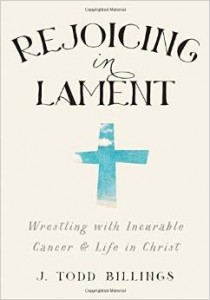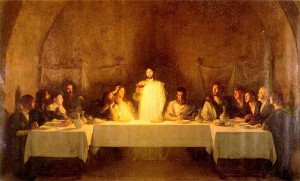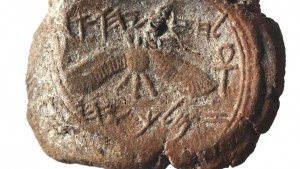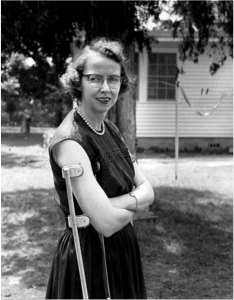Pastoral Backstory – December 3rd, 2015

[box] Correction: We listed the Mercy Cohort’s email address incorrectly last week. The correct address is mercy@ctktexas.com. We regret the error. –Ed.[/box]
December 3rd, 2015
 ](http://richardmcbee.com/writings/contemporary-jewish-art/item/megillas-ruth-in-jewish-art)
](http://richardmcbee.com/writings/contemporary-jewish-art/item/megillas-ruth-in-jewish-art) ](http://jtoddbillings.com/books/rejoicing-in-lament/)
We come to The Table this Sunday, as is our custom on the first Sunday of the month. The bread and the wine are rightly called mysteries, but that does not leave us to be merely mystified by them; there is an expectation that we apply ourselves to eating and drinking of them worthily which means reckoning with their meaning insofar as we can.
For that reason we try, from time to time, to offer guidance in how one prepares themselves to receive the Sacrament–this in keeping with Paul’s admonition in 1 Corinthians 11.
You could do worse than review what our Larger Catechism has to say about preparing, receiving, and responding to the Sacrament upon partaking. Before you come Sunday, let these excerpts from the LC provide some of that needed guidance:
> **171**_. How are they that receive the sacrament of the Lord’s Supper to prepare themselves before they come unto it?_
>
> They that receive the sacrament of the Lord’s Supper are, before they come, to prepare themselves thereunto, by examining themselves of their being in Christ, of their sins and wants; of the truth and measure of their knowledge, faith, repentance; love to God and the brethren, charity to all men, forgiving those that have done them wrong; of their desires after Christ, and of their new obedience; and by renewing the exercise of these graces, by serious meditation, and fervent prayer.
>
> **174.** _What is required of them that receive the sacrament of the Lord’s Supper in the time of the administration of it? _
>
> It is required of them that receive the sacrament of the Lord’s Supper, that, during the time of the administration of it, with all holy reverence and attention they wait upon God in that ordinance, diligently observe the sacramental elements and actions, heedfully discern the Lord’s body, and affectionately meditate on his death and sufferings, and thereby stir up themselves to a vigorous exercise of their graces; in judging themselves, and sorrowing for sin; in earnest hungering and thirsting after Christ, feeding on him by faith, receiving of his fulness, trusting in his merits, rejoicing in his love, giving thanks for his grace; in renewing of their covenant with God, and love to all the saints.
>
> **175.** _What is the duty of Christians, after they have received the sacrament of the Lord’s Supper?_ WLC 175
>
> The duty of Christians, after they have received the sacrament of the Lord’s Supper, is seriously to consider: How they have behaved themselves therein, and with: What success; if they find quickening and comfort, to bless God for it, beg the continuance of it, watch against relapses, fulfil their vows, and encourage themselves to a frequent attendance on that ordinance: but if they find no present benefit, more exactly to review their preparation to, and carriage at, the sacrament; in both which, if they can approve themselves to God and their own consciences, they are to wait for the fruit of it in due time: but, if they see they have failed in either, they are to be humbled, and to attend upon it afterwards with more care and diligence.
](http://jtoddbillings.com/books/rejoicing-in-lament/)
We come to The Table this Sunday, as is our custom on the first Sunday of the month. The bread and the wine are rightly called mysteries, but that does not leave us to be merely mystified by them; there is an expectation that we apply ourselves to eating and drinking of them worthily which means reckoning with their meaning insofar as we can.
For that reason we try, from time to time, to offer guidance in how one prepares themselves to receive the Sacrament–this in keeping with Paul’s admonition in 1 Corinthians 11.
You could do worse than review what our Larger Catechism has to say about preparing, receiving, and responding to the Sacrament upon partaking. Before you come Sunday, let these excerpts from the LC provide some of that needed guidance:
> **171**_. How are they that receive the sacrament of the Lord’s Supper to prepare themselves before they come unto it?_
>
> They that receive the sacrament of the Lord’s Supper are, before they come, to prepare themselves thereunto, by examining themselves of their being in Christ, of their sins and wants; of the truth and measure of their knowledge, faith, repentance; love to God and the brethren, charity to all men, forgiving those that have done them wrong; of their desires after Christ, and of their new obedience; and by renewing the exercise of these graces, by serious meditation, and fervent prayer.
>
> **174.** _What is required of them that receive the sacrament of the Lord’s Supper in the time of the administration of it? _
>
> It is required of them that receive the sacrament of the Lord’s Supper, that, during the time of the administration of it, with all holy reverence and attention they wait upon God in that ordinance, diligently observe the sacramental elements and actions, heedfully discern the Lord’s body, and affectionately meditate on his death and sufferings, and thereby stir up themselves to a vigorous exercise of their graces; in judging themselves, and sorrowing for sin; in earnest hungering and thirsting after Christ, feeding on him by faith, receiving of his fulness, trusting in his merits, rejoicing in his love, giving thanks for his grace; in renewing of their covenant with God, and love to all the saints.
>
> **175.** _What is the duty of Christians, after they have received the sacrament of the Lord’s Supper?_ WLC 175
>
> The duty of Christians, after they have received the sacrament of the Lord’s Supper, is seriously to consider: How they have behaved themselves therein, and with: What success; if they find quickening and comfort, to bless God for it, beg the continuance of it, watch against relapses, fulfil their vows, and encourage themselves to a frequent attendance on that ordinance: but if they find no present benefit, more exactly to review their preparation to, and carriage at, the sacrament; in both which, if they can approve themselves to God and their own consciences, they are to wait for the fruit of it in due time: but, if they see they have failed in either, they are to be humbled, and to attend upon it afterwards with more care and diligence.

 ](http://www.haaretz.com/jewish/archaeology/.premium-1.689594?v=10DEE640B3FBF780F8792995AF07CCDA)
](http://www.haaretz.com/jewish/archaeology/.premium-1.689594?v=10DEE640B3FBF780F8792995AF07CCDA)
What does it mean to become a member of CtK? Why does membership even matter? For that matter, is it even biblical?
For four Sundays during 2nd hour starting January 10th, we’ll convene an introduction to what anchors us, what guides us, and what we find ourselves up to as members of CtK.
The class doesn’t obligate you to become a member, but it is a prerequisite for membership.
In advance of the class, we have some preparatory reading we’d like you to do. Reading packets will be available this Sunday, December 6th. Or you can download a copy here.
Please RSVP on The City to let us know if we should expect you. Feel free to email us if you have any questions about the class or CtK. (And if you’re not on our City page, click here to register.)

I think that the Church is the only thing that is going to make
the terrible world we are coming to endurable;
the only thing that makes the church endurable
is that it is the body of Christ and that on this we are fed.
—Flannery O’Connor

There are several events on tap this Advent:
- a women’s ministry gathering to assemble Christmas baskets for a women’s shelter this Friday
- a church-wide effort to do likewise
- our crock-pot cookoff and carol sing on December 20th
- our Christmas Eve service
There’s also some resources for individuals and families to give their attention to the enduring, rather than the disposable, dimension of this season.
All that’s on our City page, too.

Finally, we opened last Sunday’s sermon with a reference to Leonard Cohen’s elegiac ode, “Hallelujah.” Covered by over 300 artists, I still think this one captures best the soul of the song (with due respect to those who think Jeff Buckley holds that distinction.)